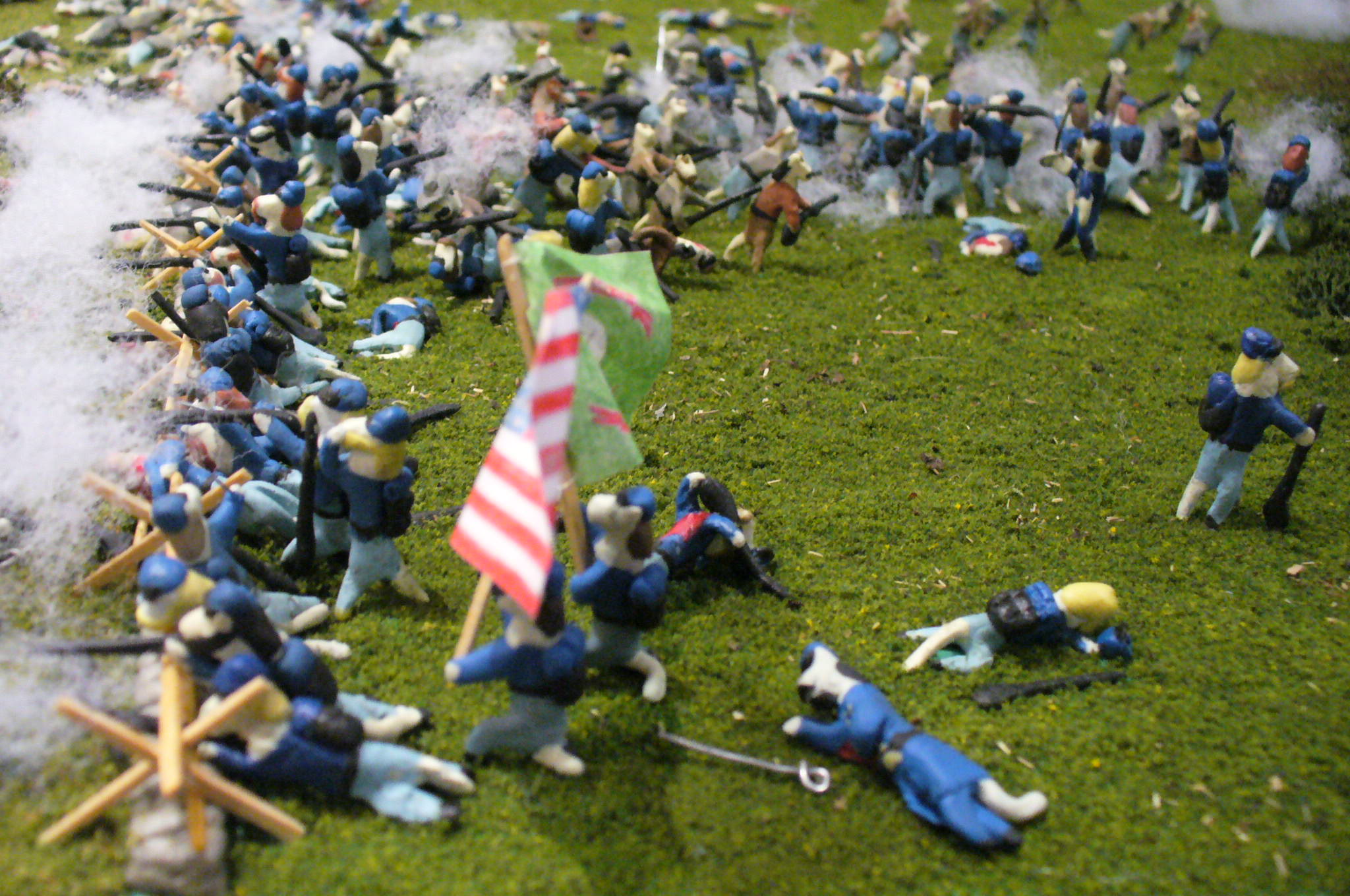( “Faugh a Ballagh” ) A battle cry of Irish origin meaning ‘clear the way’ was first used as a regimental motto of the Royal Irish Fusiliers back in and now the motto of the Royal Irish Regiment. It was adopted by the the Fusiliers back in 1798 after the exploits of Sgt Patrick Masterson at the Battle of Barossa as he attacked the French ranks. Has also been used as regimental mottoes of battalions in the American Civil War such as the 69th New York Volunteer Infantry and the 55th Battalion of the Australian 5th Division in WW1. Clear The Way! -From Urban Dictionary
The Fighting 69th was one of several films, like Sgt. York, released just prior to WWII, intended to ready the American public for the conflict to come. I should say involvement in the conflict to come, as it was released smack in the middle of the “Phoney War” and a few months before the Battle of Britain. Japanese forces were in China. Filming began within weeks of the invasion of Poland.
I knew the role the New York 69th Infantry Regiment played in the Battle of Fredericksburg. It was virtually destroyed in its uphill attack against Confederate positions on Marye’s Heights, defended by the largely Irish immigrants of the 24th Georgia Regiment . The gray-backs cheered the valor of their countrymen.
The Fighting Sixty-Ninth was so named by Robert E. Lee.

I had never seen the film, but the good folks at TCM made it a St. Patrick’s Day offering. It was better than I would have expected. Several historical figures appear in the film. An exception of one loudmouth, Private Jerry Plunkett, played by James Cagney. In the beginning it would appear Plunkett is a cookie cutter outsider that plagues films of this sort. Yegs what see the light and join the party, marching in step to the cadence of Hollywood. With the help of the iconic, Chaplin Father Duffy, played by Hollywood’s resident Irishman, Pat O’Brien,. He does. It happens, not until the last reel.
The poet Joyce Kilmer (Trees) is an important part of the story, including his death at age 31 in August of 1918.
The legendary war hero Wild Bill Donovan (post war crime fighter as US Attorney, sans bat-suit, director of the OSS and founder of the CIA) (played by George Brent, former Irish revolutionary, a lieutenant to Michael Collins), is in command. He is the steady, no-nonsense major, an iron fist in a velvet glove.

Warner Bros. stock company player (and frequent supporting play to Errol Flynn) Alan Hale, is in place as Sgt. “Big Mike” Wynn, one of three brothers Plunkett gets killed through his cowardliness. His initial bluster and quest of medals for bravery evaporate at the sound of the first shot fired in anger. “Holy Mother Machree!”
Subtitle: The Constant Coward.
The toleration of Plunkett’s continued cowardly behavior, engendering one disaster after another, including the deaths of doughboys, is the main weakness of the story. Donovan wants him transferred out, but kindly Father Duffy sees good in the lad (Cagney was 40 years old at the time and looked it). I’ve no doubt it was seen as a contrast to the tough-guy roles of the previous decade, and after-all, the lad was likely under contract, and the production needed a major star. (I guess Flynn was unavailable. George Raft? Christ no!). Defying audience expectations, I expect.

Far too much of the screen time is taken-up by the repetition of Duffy’s “the lad will come around and see the light” scenes. Historical accuracy is aided with training at Camp Mills, (Long Island) the Mud March, dugout collapse at Rouge Bouquet (where two Wynns buy the farm), and the Ourcq River crossing. The boys even got the Victory Parade, without Plunkett, who redeemed his honor, not to mention his soul,by taking out a German machine gun nest. Not satisfied with that, he jumps on a live Kraut grenade to save his pals.
“Next time I hear the name, Plunkett”, says Big Mike, “I’ll snap two, and salute.” To the tune of the Garryowen.
Someone should have been slapped hard for Cagney’s deathbed scene, as he speaks to Duffy’s “boss”, and he didn’t mean the Chief Chaplin of the Army, either. Cagney appears sleepy, rather than dying. George Brent seems bored and Alan Hale offers up his patented look of surprise seen in so many films as Errol Flynn’s sidekick.. “What? What? Which way did he go…?”
Orson Welles observed an actor praying is never convincing on screen, and Duffy’s prayer for almighty guidance just before the departure for France is no exception. You can see Pat O’Brian does not believe it, and neither did I.
Saints preserve us.

Cinematography by Tony Gaudio (Bette Davis’ favorite cameraman) aids director William Keighley in giving sunny Southern California the look of battlefield France, most of the film is shot in exteriors. Editor Owen Marks provides a smooth flow of images without compromising the director.
But, unlike other war films, the image never opens up. No wide view of the battlefield as in All Quiet on the Western Front. With an aspect ratio of 1.37 : 1, it is a perfect fit for television.
The film succeeds however, in its most important message. Men brought together to form a single unit. National Guard units from all the states brought together at Camp Mills to form the Rainbow Division. A division for a common purpose. Donovan tells them past differences are indeed past. We are all in this together.
A timely message for today.